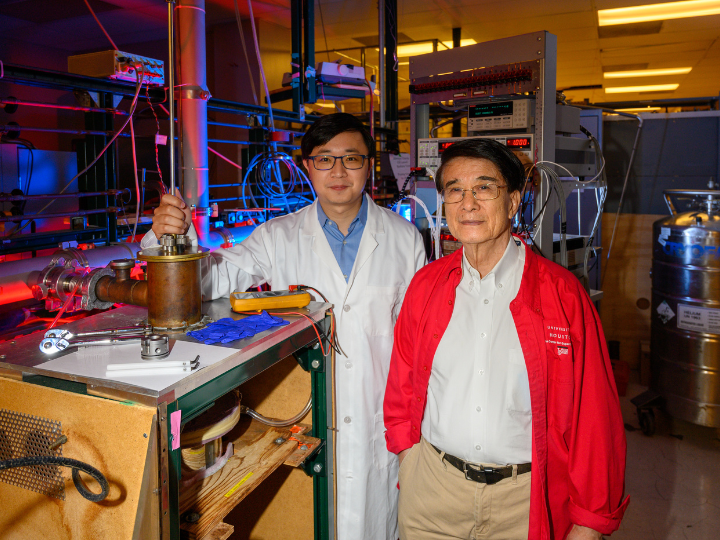
Researchers at the Texas Center for Superconductivity and the Department of Physics at the University of Houston have received second-year funding from Intellectual Ventures, a global leader in the business of invention, to continue their important study of the retention at atmospheric pressure of high-pressure-induced/enhanced superconductivity.
The project, which has been awarded $767,000 to date, is led by Paul C. W. Chu, T.L.L. Temple Chair of Science, professor of physics and founding director of the TcSUH, and Liangzi Deng, assistant professor of physics and a new TcSUH principal investigator.
“Intellectual Ventures funded this research because Paul Chu is one of the acknowledged thought leaders in the area of superconductivity with a multi-decade track record of scientific innovation and creativity,” said Brian Holloway, vice president of IV’s Deep Science Fund and Enterprise Science Fund. “The work led by Chu and Deng on pressure quenching could result in game-changing progress in the field. We are very excited about the preliminary results from the first year and we look forward to continuing this collaboration.”
“Working with IV gives us the freedom known for scientific pursuit and at the same time provides intellectual guidance and assistance in accord with the mission goal,” Chu said.
“This could pave the way for exploring physics of novel metastable states and set a milestone toward advancing superconductor applications,” Deng added.
Understanding and achieving high-temperature superconductivity at atmospheric pressure is the holy grail of modern condensed matter physics because it has the potential to solve global energy problems. However, the highest Tc superconductors among various systems, including cuprates, hydrides, and most recently nickelates, are all achieved under extreme high pressure using diamond anvil cells, making detailed investigation of their fundamental properties almost impossible as scientists and engineers work to achieve practical applications.
Researchers are working on making superconductivity easier to achieve, especially at room temperature (about 300 K) and normal atmospheric pressure. A key finding from Chu and Deng’s team is a method called “pressure-quench protocol” (PQP), which helps maintain favorable properties (such as superconductivity) in certain materials even after the high pressure needed to create them is completely removed.
In the first year of their project, the research team set up a special system to synthesize materials under high pressure and high temperature. They tested this system and found it works, but they still need to fine-tune it for creating specific materials called rare-earth hydrides. They are actively improving the PQP to enhance their project. Chu also noted that how they handle the samples after using the PQP is crucial for keeping those superconducting properties intact during further testing.
“For the first time, we succeeded in retrieving the PQed samples to ambient pressure from the diamond anvil cell and carried out the magnetic characterization in a SQUID magnetometer to demonstrate that the PQed phase is bulk and not filamentary,” Chu said. “Our team also demonstrated that the PQP and depressurization can lead to higher Tc at ambient pressure for some compounds, offering an additional avenue for Tc enhancement.”
Deng, co-PI of the IV project, added that second-year projects will investigate the retention of pressure-induced/enhanced superconductivity in cuprates and hydrides.
“If successful, UH will once again break the record for the highest superconducting Tc at atmospheric pressure,” Deng said. “Additionally, we will collaborate closely with theorists to uncover the mechanism of PQP. Our research has far-reaching implications, with the potential to extend beyond superconductors to other material systems.”